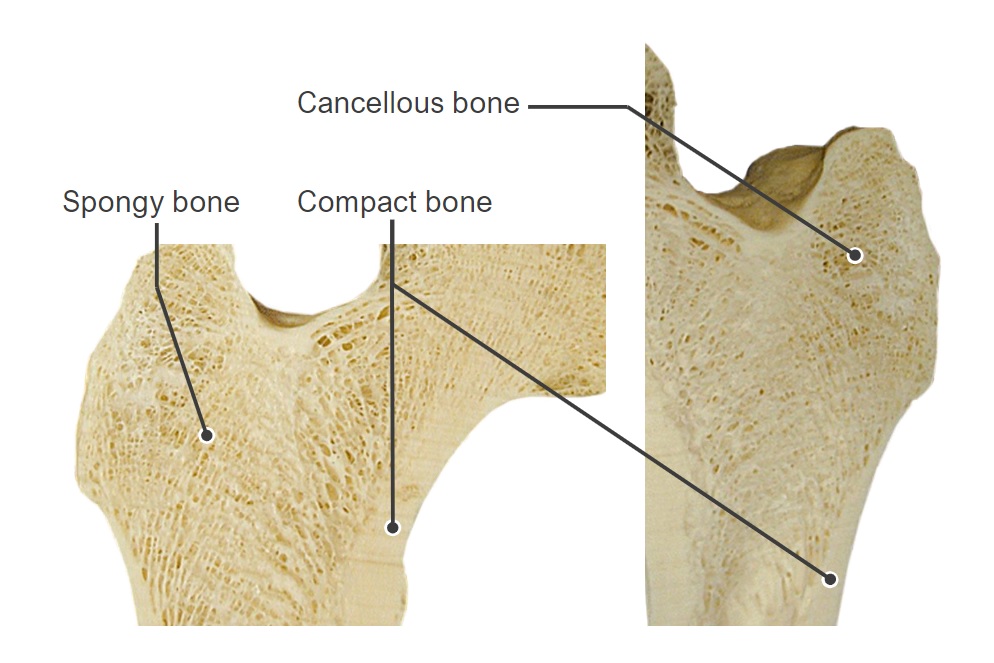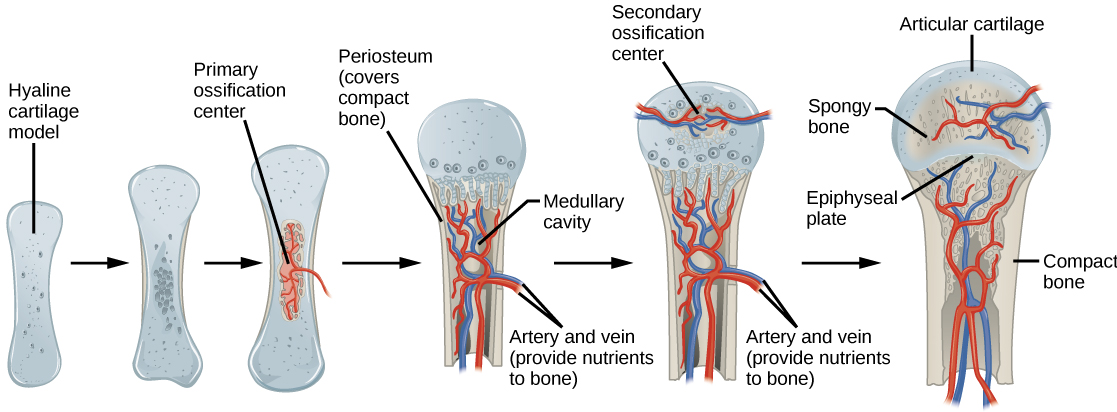Playlist
Show Playlist
Hide Playlist
Structure and Function of Bones and Muscles
-
03 Slides Cymet Introduction to Muscles and Bones.pdf
-
Reference List Osteopathic Manipulative Medicine.pdf
-
Download Lecture Overview
00:01 <b>Muscles and bones are interesting organs.</b> <b>Sure, you could look at the obvious and say they provide structure,</b> <b>they provide movement,</b> <b>and that’s what’s right there in front of you.</b> <b>But they’re also organs that make blood,</b> <b>make energy, and do a lot more for our body.</b> <b>So the idea that I want to change here</b> <b>is not just looking at the structure</b> <b>of the musculoskeletal system,</b> <b>but look at the interaction of the musculoskeletal system</b> <b>with the whole body because the bone is an organ.</b> <b>It’s made up of living tissue</b> <b>and it makes blood in the tip of the bone.</b> <b>It stores calcium and phosphate</b> <b>which goes back and forth within the blood.</b> <b>It helps regulate potassium.</b> <b>It’s highly vascular and highly innervated</b> <b>so that we have a sense of what’s going on.</b> <b>But when most people look at the bone, they say,</b> <b>“Yeah, it defines the structure of the body,</b> <b>the size of the body.”</b> <b>And we want to get past that and move forward.</b> <b>When we talked about the ribs, we talked about it being a protective case.</b> <b>The skull is also a protective case.</b> <b>A lot of our bones protect</b> <b>the vasculature and the nerves underneath it</b> <b>and it does provide leverage for movement, activity, and other things.</b> <b>The bone system—the skeletal system— develops neural crest cells</b> <b>early on in development—early on in embryology.</b> <b>The 4th week is when it starts</b> <b>and by the 9th week it’s pretty much complete,</b> <b>and the bony skeleton has been set</b> <b>and it just needs to grow in size.</b> <b>And when we look at where growth is occurring in bones,</b> <b>when we’re children,</b> <b>it’s usually the epiphyseal plate.</b> <b>So we’re going to look at epiphysis, the end</b> <b>which stores a lot of the blood and produces blood,</b> <b>the metaphysis which is right below it which</b> <b>holds the growth plate,</b> <b>and the diaphysis or the shaft,</b> <b>and each part of the bone has a different function in metabolism.</b> <b>If there’s damage or disruption to the epiphyseal plate,</b> <b>then growth is going to be impaired.</b> <b>And that’s why when you’re looking at x-rays,</b> <b>you want to make sure, particularly in pediatrics,</b> <b>particularly in young patients, that it’s intact and not separated</b> <b>and that there’s no lines through it</b> <b>or impairment of the epiphyseal plate.</b> <b>Abnormal development can be from birth, from heredity.</b> <b>It can be from differences in use,</b> <b>it can be from trauma,</b> <b>and some kind of deformities occur in each level.</b> <b>Torsional deformities are when people walk wrong,</b> <b>use their limbs wrong, or have breaks.</b> <b>Tibial torsion will cause toeing in and other changes in the foot.</b> <b>So that’s something to be aware of.</b> <b>Congenital deformities include limb length, limb size, limb symmetry,</b> <b>and also you can have differences in the number of fingers and toes,</b> <b>and the numbers of bones in the body.</b> <b>So those are all things to keep in mind</b> <b>when we look at the body structure system</b> <b>and the skeletal system.</b> <b>Some deformities are apparent</b> <b>and look different because they are different and they stand out.</b> <b>Others may be unapparent, like the number of wrist bones</b> <b>or the number of bones in the hand or foot,</b> <b>may or may not be noted.</b> <b>But those differences can cause contractures,</b> <b>dislocations, and distortions of bone</b> <b>that are going to effect functioning.</b> <b>Hereditary deformities like osteogenesis imperfecta</b> <b>may lead to increased breaks</b> <b>and difficulty in bones’ functioning</b> <b>as efficiently as we would like.</b> <b>You can also see a development of developmental dysplasia of the hip</b> <b>as a common bone deformity as well as club foot,</b> <b>or talipes is another term used to describe club foot.</b> <b>One of the most common deformities we see is scoliosis</b> <b>and scoliosis could be a sidebending deformity</b> <b>with abnormal twisting</b> <b>or it could be a rotational deformity,</b> <b>and a lot of that is determined by heredity.</b> <b>So always assess whether or not a scoliosis</b> <b>is something that is lateral or rotational</b> <b>and you also want to note if it goes away with motion.</b> <b>A lot of early scoliosis is postural</b> <b>and that changes as someone gets older and as the bones solidify.</b> <b>Some of it is structural and will not change</b> <b>with sidebending or motion.</b> <b>We do classify scoliosis as being congenital,</b> <b>neuromuscular, or idiopathic.</b> <b>Paget’s disease is a skeletal disorder</b> <b>that has excessive bone destruction and repair.</b> <b>The bones are going to look different on x-ray</b> <b>and the bones will function differently,</b> <b>and may not be able to provide the same support to the body</b> <b>in terms of blood formation or mineral regulation</b> <b>without growing out of proportion to what we’d expect.</b> <b>So you may have increased bony deposition</b> <b>and you may have increase in the size and shape of the bone</b> <b>in certain areas of the body.</b> <b>So you’re going to have the increased structural changes</b> <b>that may be a tower skull, it may be long arms,</b> <b>but they’re going to look different.</b> <b>Bones tend to grow and get reformed by themselves.</b> <b>They have different mechanisms that tell many to be reformed.</b> <b>So when somebody is active,</b> <b>their muscle use, their pressure they put on the bones,</b> <b>will say that the bone needs to be reformed.</b> <b>Wolff’s law talks about the area of greatest bone growth</b> <b>is the area of greatest pressure.</b> <b>So if you lift weights, you’re going to help grow bones.</b> <b>The other force that’s involved is called piezoelectric forces,</b> <b>and those are the electric forces that come from the muscle</b> <b>that stimulate bone growth</b> <b>where the muscles are using the bones for leverage.</b> <b>So it’s a nice feedback mechanism that determines how big,</b> <b>how long, and what size and shape the bone is going to be.</b> <b>We also have some feedback from</b> <b>the vascular system in cytokines</b> <b>that will help reform the bone.</b> <b>We do know that there are 4 types of cells involved in bony regrowth.</b> <b>Most of the time we talk about osteoblasts and osteoclasts</b> <b>but there are also osteoprogenitor cells</b> <b>which are stem cells that can become either.</b> <b>There are also osteocytes</b> <b>which is after laying down bone,</b> <b>the osteoblast gets caught in that area,</b> <b>and becomes more mature</b> <b>and helps maintain that area of bone.</b> <b>And osteoclasts are the ones that remove the bone matrix</b> <b>and help stimulate reformation of bony tissue.</b> <b>So every canaliculus, every blood supplied area of bone,</b> <b>can reform every 3 months.</b> <b>Not everyone is doing it at the same time, so every 2 to 3 years,</b> <b>a bone is completely reformed</b> <b>and that maintains the structural integrity</b> <b>and maintains the strength of the bone.</b> <b>When we talk about the bone, bones are an encased organ,</b> <b>and they’re encased by periosteum.</b> <b>The periosteum has an outer fibrous layer</b> <b>where the muscles attach</b> <b>and an inner osteogenic layer</b> <b>which helps maintain the integrity,</b> <b>and the osteogenic layer also has osteoclasts and osteoblasts</b> <b>that are not caught like the osteocytes.</b> <b>The vascular supply is critical for maintaining nutrition to the bone,</b> <b>making sure bones have what it needs,</b> <b>and giving feedback to the periosteal and the bone system.</b> <b>When we talk about bone growth</b> <b>and bone structure,</b> <b>it’s important to know what the bones should look like,</b> <b>which ones are predetermined by hereditary—by genetics,</b> <b>which ones are going to be determined by your ethnic group, your sex,</b> <b>and basically your history of what size you are meant to be.</b> <b>We also know that at different ages it changes</b> <b>even though the bone shape and structure is determined</b> <b>at about 9 weeks of gestation.</b> <b>Bone growth in the first 4 years of life is critical.</b> <b>That’s when arm length, leg length,</b> <b>and the length of the trunk</b> <b>versus the length of the extremities pretty much gets set.</b> <b>We normally say that the ASIS to the shoulder</b> <b>should be equal to the distance of the ASIS to the medial malleolus</b> <b>as long as nutrition is good,</b> <b>proper sun exposure is obtained,</b> <b>and you get the minerals and nutrients you need to grow.</b> <b>In areas where you do not have good nutrition,</b> <b>where people are sun sensitive—they stay inside—and don’t get proper activity,</b> <b>they’re going to have smaller leg length to trunk length.</b> <b>The trunk will be longer than the legs.</b> <b>You bring them from that environment</b> <b>to a healthy environment with a good diet and good nutrition, their legs—</b> <b>if it’s under 4 years of age—will grow longer.</b> <b>And again, the nutrition is important</b> <b>whether or not they get calcium, magnesium, phosphorus,</b> <b>and the other nutrients necessary for growth.</b> <b>Other issues that matter</b> <b>in terms of bone growth is physical activity.</b> <b>People who are more sedentary are going to have smaller, weaker bones.</b> <b>Weight, up until a certain level, matters.</b> <b>If you’re underweight, you’re not going to have strong bones,</b> <b>and this is usually set by 25 years of age.</b> <b>So people who are chronically thin, chronically malnourished,</b> <b>will not reach their predetermined bone mass activity that’s possible.</b> <b>Other things we’re seeing in today’s modern society, is lifestyle choices</b> <b>are effecting bone growth.</b> <b>People who try and maintain a low body mass,</b> <b>a low body weight tend not to reach it.</b> <b>People who drink a lot of alcohol and caffeine,</b> <b>people who smoke tend not to reach peak muscle mass.</b> <b>And we’re seeing supplements blanching bone</b> <b>and we’re seeing drugs like steroids and antiseizure medicines,</b> <b>also can effect the ability of the body to get to a particular body structure</b> <b>that is most efficient, most effective and strongest.</b> <b>So those are all things we have to be aware of.</b>
About the Lecture
The lecture Structure and Function of Bones and Muscles by Tyler Cymet, DO, FACOFP is from the course Osteopathic Principles and Tenets. It contains the following chapters:
- Bones and Muscles
- Abnormal Bone Development
- Bone Tissue/4 Cell Types
Included Quiz Questions
At which of the following stages or weeks of embryonic development do the vertebrae of the axial skeleton begin to develop?
- 4th week
- 2rd week
- 9th week
- 6th week
- 10th week
In the pediatric patient, the area of bone growth occurs in which of the following locations of the bone?
- Epiphyseal plate
- Metaphysis
- Metaphyseal plate
- Diaphysis
- Between the diaphysis and metaphysis
Which of the following congenital deformities pertains to the webbing of fingers or toes?
- Syndactyly
- Polydactyly
- Amelia
- Phocomelia
- Sirenomelia
Which type of collagen, a protein of our connective tissues, is defective or of poor quality in osteogenesis imperfecta, which is characterized by fragile bones?
- Type I
- Type II
- Type III
- Type IV
- Type V
Which of the following types of bone cells is responsible for removing or resorbing bone tissue or matrix?
- Osteoclast
- Osteoprogenitor
- Osteoblast
- Osteocyte
- Osteogenic
Customer reviews
5,0 of 5 stars
| 5 Stars |
|
5 |
| 4 Stars |
|
0 |
| 3 Stars |
|
0 |
| 2 Stars |
|
0 |
| 1 Star |
|
0 |





